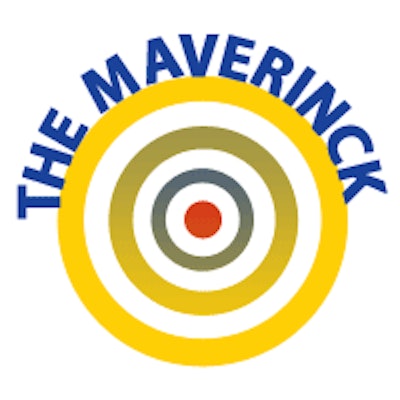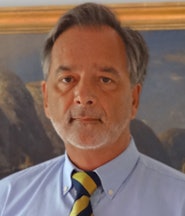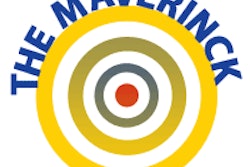
Half a year ago I wrote a column about the sad state of scientific journals.1 I never expected to see such a rapid decline. Something worse than expected happened: Some major science publishers are sleeping with the enemy and turning into vanity or subsidy publishers. They make authors pay for publication of their articles -- an incredible loss of face for old and established publishing houses.
During the last 20 years, science publishers created new scientific journals by the dozen; the more, the better. Now they are trying to get rid of them. Suddenly, like a bolt out of the blue, long-time editors in chief of leading journals are being dismissed in a rather derogatory manner.
 Dr. Peter Rinck, PhD, is a professor of diagnostic imaging and the president of the Council of the Round Table Foundation (TRTF) and European Magnetic Resonance Forum (EMRF).
Dr. Peter Rinck, PhD, is a professor of diagnostic imaging and the president of the Council of the Round Table Foundation (TRTF) and European Magnetic Resonance Forum (EMRF).Wiley, for instance, claims to be constantly adapting its journals to changes in the market, to keep up with new developments, and to serve authors in the best way they can. There is no mention of the readers nor of the work of the journals' editors -- nor of the quality of the scientific content.
Interestingly, Wiley has signed a new agreement to publish a journal with Hindawi Publishing.2 This agreement gives Hindawi control over all publishing activities including editorial oversight. Hindawi apparently will have an editorial board but will not have an editor in chief, which means there is no scientific and ethical oversight.
All established and trustworthy scientific journals have editors because quality and credibility of scientific papers can only be guaranteed by a sturdy editorial policy, editorial ethics, and a balanced understanding of what can be accepted and what, after thorough peer reviews, is refused for quality or other reasons.
More so, Wiley has had difficulties finding the right level of communication. As one of the renowned scientists on an editorial board remarked, "I was very displeased to see this letter. It reads like one sent by a military commander to his subordinates."
The former editor of another journal who was removed from his position by Elsevier summarized the general situation of the scientific journal market as follows:
Quality is out, quantity for money-making is in. Although this seems to be the present trend, it cannot survive for long. Science and business must be in equilibrium for long-term success; when one dominates, the other will suffer.
Whether Wiley is truly in financial trouble or is just trying to improve profits remains unclear to the outsider. However, reading the annual reviews written for investing shareholders revealed to the trained eye of those who can read between the lines that in-house economic measures were announced -- which is always a sign of looming financial problems.
The failure or inability of the universities, the readers, the scientific editors, and editorial boards to invest money and manpower into the future of independent science has come to a point where we, the scientists, are left with a hopelessly unreliable publication system. Science publishers today eschew what doesn't yield the quick payoff.
A class system will or has already developed: outstanding and reliable publications, run-of-the-mill publications, and vanity publications. In the end, there will be a two-class or three-class journal market far worse than what exists today.3
One good thing is there are no more subscription and library fees for these journals. On the other hand, whatever is published in these journals is not physically archived and will be forgotten the next day because nobody is responsible for archiving.
An interesting side effect of the excessive number of scientific articles is that they are lost in the data cloud. Until recently, authors and publishers believed in the helpful power of the "impact factor," but even this is becoming useless in the selection processes for grants and positions. Whatever is and was published digitally by Wiley, Elsevier, and possibly others will be lost. Now the most important publications to be cited are newspapers, dedicated news magazines, and similar publications.
The reputation of Wiley and other established publishers will suffer dramatically, and they will be considered untrustworthy and irresponsible, not only by the editors, collaborators, and reviewers, but also by authors. Even past authors are involved; their articles were published in journals that have been downgraded from a top scientific level to a low-level internet domain.
However, beyond the animosity we may feel toward these publishers, they are not enemies of science. Science is the gold they live off, and we voluntarily deliver and hand over this gold to them. They are not interested in us -- they are interested in our donations.
You get what you give. Let's keep the gold for ourselves. Let's publish ourselves and guarantee quality of science. It's not so difficult, but it requires personal dedication and commitment from universities and other institutions.
Dr. Peter Rinck, PhD, is a professor of diagnostic imaging and the president of the Council of the Round Table Foundation (TRTF) and European Magnetic Resonance Forum (EMRF).
References
- Rinck PA. The calamity of medical and radiological publications. AuntMinnieEurope.com. http://www.auntminnieeurope.com/index.aspx?sec=nws&sub=rad&pag=dis&ItemID=612144. 21 October 2015. Accessed 27 April 2016.
- Hindawi Publishing Corporation is a subsidy publisher of research journals founded in 1997, based in Cairo, Egypt. Its profit margins are higher than those of the established publishers. More information about Hindawi: https://scholarlyoa.com/?s=hindawi
- Butler D. Investigating journals: The dark side of publishing. The explosion in open-access publishing has fueled the rise of questionable operators. Nature. 2013;495:433-435.
The comments and observations expressed herein do not necessarily reflect the opinions of AuntMinnieEurope.com, nor should they be construed as an endorsement or admonishment of any particular vendor, analyst, industry consultant, or consulting group.



















